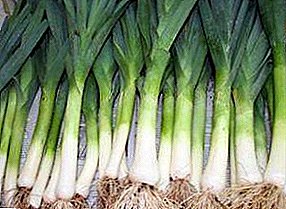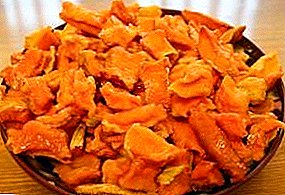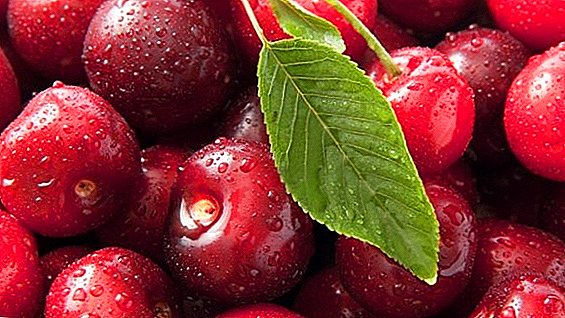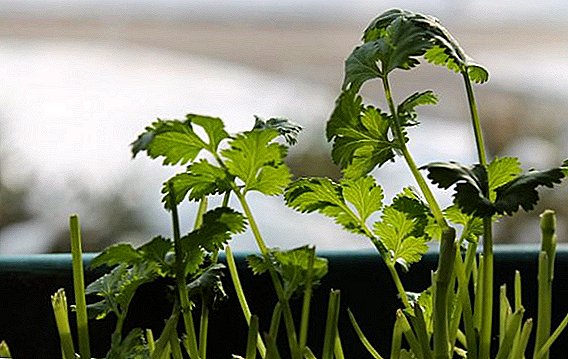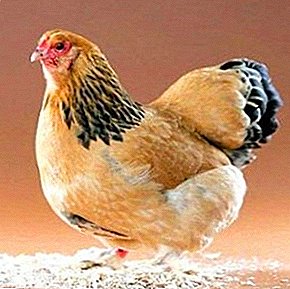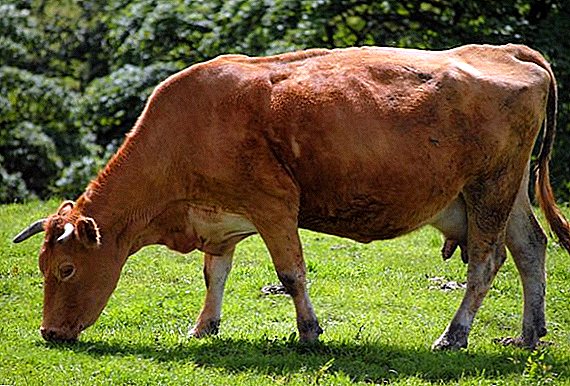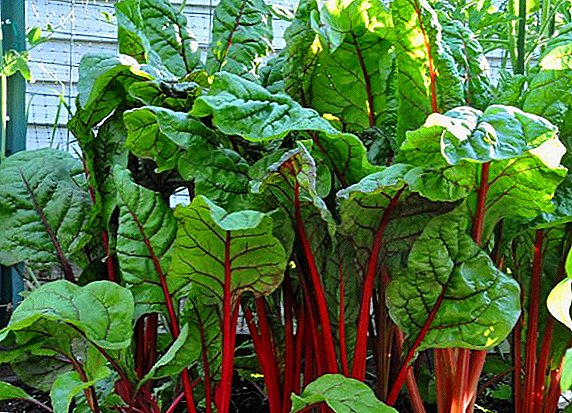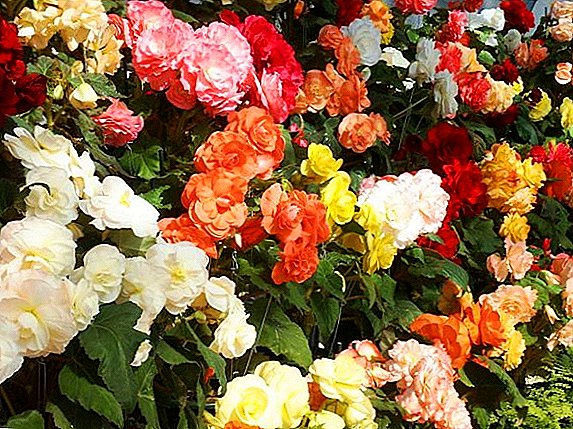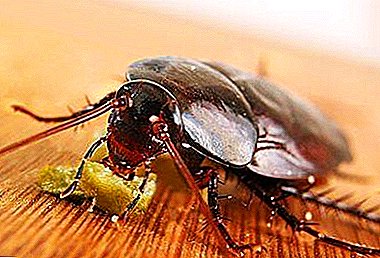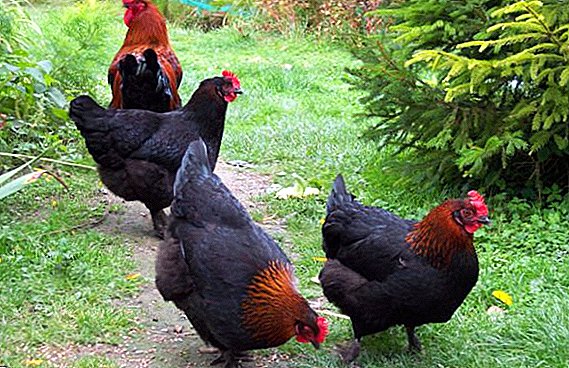 People who are used to breeding poultry will probably be interested to learn about the features of such a breed of hen as Maran, because in comparison with many of their relatives, they have some advantages, expressed in both egg production and meat characteristics. Let's understand the intricacies of their descriptions and pay attention to the required conditions of detention, which will ensure the greatest productivity.
People who are used to breeding poultry will probably be interested to learn about the features of such a breed of hen as Maran, because in comparison with many of their relatives, they have some advantages, expressed in both egg production and meat characteristics. Let's understand the intricacies of their descriptions and pay attention to the required conditions of detention, which will ensure the greatest productivity.
Description and features of the breed
Each breed of animals and birds has its own individual characteristics, so that the breeder can choose for himself the most suitable version of domestic animals. Maran chickens are not an exception in this matter, because it was because of their beautiful appearance and good productivity that they became popular with many farmers.
Origin
 Maranas were born thanks to the efforts of French breeders working in 1895 in the city of Maran. Considering that this is a very harsh climatic region, this bird has already developed good resistance to various adverse factors from the very "birth".
Maranas were born thanks to the efforts of French breeders working in 1895 in the city of Maran. Considering that this is a very harsh climatic region, this bird has already developed good resistance to various adverse factors from the very "birth".
This strain was honored with a golden prize at a bird exhibition in 1914 (held in the city of La Rochelle), after which it was sold throughout Europe. However, in Ukraine and Russia no one knew about these beautiful chickens for a long time, although I must say that lately they have been increasingly found in domestic farmsteads.
Did you know? Scientists believe that the first chickens, which later became poultry, lived in Ethiopia about 3,000 years ago.
External data
When describing poultry breeds, first of all, attention should be paid to its appearance and productivity, since these criteria play the main role in the selection process.  As regards the description of Maran, the following are applicable to them. appearance characteristics:
As regards the description of Maran, the following are applicable to them. appearance characteristics:
- these are medium or slightly larger than average chickens, the roosters of which reach 4 kg and the weight of hens is about 3 kg;
- all representatives of the breed have beautiful orange-red eyes, a short tail (hangs at an angle of 45 °), and close-fitting feathers;
- the shape of the body is elongated, and the head is small;
- roosters are distinguished from their hens by their increased plumage (in particular, in the neck area) and by the presence of well-marked earrings;
- The legs of the bird are medium in size, with well-separated four fingers visible (their color varies from white to dark gray, depending on the color of the feathers);
- the shoulders of chickens are high and wide, and the long neck is thickly covered with feathers, which, due to their length, form a rather attractive “collar”;
- have a yellow, slightly curved beak, which looks quite strong and powerful.
Read also about the master gray, amrox, brahma, leggorn, Kuchinskaya jubilee, Poltava, Zagorskaya salmon, redbro, rhode island, Adler silver rocks.
Dwarf subspecies of this breed are also distinguished, which differ from ordinary birds only in size: in this case, the mass of representatives does not exceed one kilogram (for roosters) and 900 g for chickens.
As for the other qualities, I immediately want to note the peculiarities of the nature of Maran, because they are very balanced and calm representatives of poultry, although they can be quite active on a wide range.
Productivity
Perhaps, the described breed can be safely attributed to the meat and egg group, since they are bred to receive both. One layer is able to carry about 150 eggs per year, and almost all of them have a chocolate color and have a strong shell (it was the color that caused these chickens to be called the “bird that carries black eggs”). One egg weighs on average from 65 to 75 g and has a high taste.
Did you know? If you believe the breeders, the darker the egg shell, the tastier and better.
Truth be told, using maran only for meat is very casual, since their main value is still in large eggs. For the first time, chickens begin to be born at the age of 5-6 months, but at this time the size of the eggs does not exceed 55-60 g and may not have a characteristic color. After a short amount of time, everything is normalized. 
Color options
Features of the breed allow you to simply admire this bird, because in addition to a well-built body, all representatives can boast of a wide color range of plumage. Among maranov, individuals with black-copper, silver and white feathers are distinguished, although it is the first option that is most admiring.  The feathers of the black-and-copper representative of the breed (it occurs most often) are completely black on top, shimmering with a “golden necklace” on the neck, and in roosters bright gold spots on the chest and reddish feathers on the back are also a distinctive feature.
The feathers of the black-and-copper representative of the breed (it occurs most often) are completely black on top, shimmering with a “golden necklace” on the neck, and in roosters bright gold spots on the chest and reddish feathers on the back are also a distinctive feature.  Some maranov called "golden cuckoos". Their color really resembles a cuckoo, with alternating black and golden feathers. This version of the coloring is less common and is especially appreciated by breeders.
Some maranov called "golden cuckoos". Their color really resembles a cuckoo, with alternating black and golden feathers. This version of the coloring is less common and is especially appreciated by breeders.  Also popular is the so-called wheat maran. In this case, roosters bright golden feathers stand out in the chest and on the neck, and hens characterized by a soft yellow plumage, although in some cases the color can turn into a golden-red, sometimes with a brown tint.
Also popular is the so-called wheat maran. In this case, roosters bright golden feathers stand out in the chest and on the neck, and hens characterized by a soft yellow plumage, although in some cases the color can turn into a golden-red, sometimes with a brown tint.  Pure white representatives of the breed are not so popular, since there is no interesting pattern on their feathers, although if you look at it, this does not affect the performance.
Pure white representatives of the breed are not so popular, since there is no interesting pattern on their feathers, although if you look at it, this does not affect the performance.
A rather interesting option is "Colombian color": in addition to the white feathers on the body, there is a black "necklace" around the neck.
Did you know? Formation of eggs in the body of the chicken takes about a day, and for his appearance does not necessarily have a rooster.
How not to make a mistake when buying
When you buy a maran, you can be sure that you are buying a bird with excellent performance, complemented by an attractive appearance, but the main thing is to choose the right chicks and avoid deception.
Unfortunately, many poultry farmers, either unknowingly or specially, are often given out as representatives of the breed of chickens that do not belong to it, and in adulthood they certainly will not have the required pedigree characteristics. The main rule of purchase follows from this: go for a bird only to verified breeders or to farms where disappointment will not wait for you.  In addition, you should thoroughly study the external data of maranov, because there are cases when even an adult individual with a copper color is not always a true representative of the breed, but can only be the result of crossing with another hybrid species.
In addition, you should thoroughly study the external data of maranov, because there are cases when even an adult individual with a copper color is not always a true representative of the breed, but can only be the result of crossing with another hybrid species.
If you purchase only eggs for further self-incubation, then select samples of a rich brown color, because of them most often appear "bright" representatives of the breed.
We advise you to read about the breeds of chickens: Minorca, Black Bearded, Sussex, Orpington, Russian White, Andalusian, Dominant, Kochinquin, Fireball, Viandot, Broken Brown.
Conditions of detention
Although marans are different calm character and a fairly peaceful attitude towards other representatives of the compound, they are very active, which is why they should be kept not only in a closed barn, but also regularly produced on pasture or in fenced-range walking, but with the presence of grass.
The ideal option for keeping chickens of this breed will be a spacious and free aviary. With a long stay in the fresh air, their productivity increases, and they begin to rush much better.
Important! The place chosen for the open-air cage should not be damp, as rams resistant to the usual “chicken” diseases do not tolerate high humidity.
If the room is located on a shaded area and the sun's rays rarely get inside - take care of in advance. good light mode (you can use ordinary LED lamps), which is simply necessary for the normal growth and development of birds.  In winter, the chicken coop should be lit for at least 10-11 hours, then the performance of the bird will be at a high level. It is better to have a wooden floor in the barn: at least there will be more trouble with it, but the bird will be more comfortable.
In winter, the chicken coop should be lit for at least 10-11 hours, then the performance of the bird will be at a high level. It is better to have a wooden floor in the barn: at least there will be more trouble with it, but the bird will be more comfortable.
On average, about 4-5 hens should fall on 1 m² of the house.
Unusual chickens can settle in your compound: fighting or decorative.
Feeding ration
Proper nutrition is an integral part of care, of course, if you want to get a healthy bird with good growth rates and high egg production rates. In the diet of representatives of the breed Maran must be present grain (preferably wheat) and chopped greens, with the addition of special vitamin complexes.
Otherwise, this breed is not very demanding of food and its representatives can be fed with the same food as other breeds. It is important to periodically mix shell food and calcium into food, and sometimes you can pamper your players with boiled fish or meat and bone meal.  Experts in the field of breeding birds have long calculated the daily rate of feed for chickens. So, every day the hens need to consume feed that can provide them with energy in 300-320 kcal, moreover, the crude protein in such food should be at least 20 g. For a year, one chicken can eat 40 kg of concentrated feed and 15-20 kg of greens, which is very important for its productivity.
Experts in the field of breeding birds have long calculated the daily rate of feed for chickens. So, every day the hens need to consume feed that can provide them with energy in 300-320 kcal, moreover, the crude protein in such food should be at least 20 g. For a year, one chicken can eat 40 kg of concentrated feed and 15-20 kg of greens, which is very important for its productivity.
Learn how to install feeders and drinkers for chickens.
It is also important to know and what kind of grain should be given to chickens. As we already mentioned, the rams prefer wheat, although they can be given and corn, which is a source of carbohydrates, but it also has 6% of fat (to maximize the benefits of eating it is better to grind it).
At the same time, wheat makes it possible to supply birds with vitamins E and B, and with oats they get a lot of fiber, which is responsible for the growth of plumage. It is also good if 1/3 of the grain will be introduced into the diet in germinated form.
Important! One chicken per day should be at least 250 ml of water.
If you are a beginner poultry breeder, and it’s still difficult to navigate in all the daily rates of various foods, then you can feed the maranov with ready-made feed, in which the entire daily ration for laying hens is as balanced as possible.
Thus, in the standard version of this composition there is 45% of corn, 12% of wheat, 7% of barley and sunflower meal, and also grass, fish and meat and bone meal in an amount of about 4-5%. Included in the feed and shell, limestone (about 7%) and even salt (0.3%).  As for shell and chalk, your bird should always have access to it. Otherwise, it is not worth waiting for too high egg production rates, and the appearance of chickens may deteriorate: due to a lack of calcium in the body, feathers often begin to fall out and usually bright color fades.
As for shell and chalk, your bird should always have access to it. Otherwise, it is not worth waiting for too high egg production rates, and the appearance of chickens may deteriorate: due to a lack of calcium in the body, feathers often begin to fall out and usually bright color fades.
In the absence of ready-made feeds, your task is to drawing up a diet so that its six parts made up grain, three parts boiled root vegetables, and one part various additives for which silage, sunflower oilcake, dairy products (in a fermented form), nettle, etc. are excellent. Grain should be detailed, and the remaining components can be simply mixed with water.
Important! Do not give the chickens fresh bread. Better soak the crackers in water and mix with sprouted cereals. Similarly, you can mix boiled potatoes with bone meal.
Care and hygiene
In addition to feeding, the bird must be provided with proper care. It provides for the timely cleaning and disinfection of the premises, the processing of livestock from worms and fleas, regular ventilation of the chicken coop and respect for the light regime in it: in the winter - at least two hours, and in the summer - a little longer.
Also organize your pets "dust pool" in which they can clean their feathers. On average, litter cleaning (with a content of no more than 10 individuals per 5 m²) should be done once every few days, but with more chickens this procedure is performed more often.
Watch and that the temperature in the house does not fall below +15 ºС.
Chick raising at home
The process of incubating eggs begins with the selection of the most suitable specimens for this. It is desirable that they all be the same size and have a mass not less than 65 g.  To preserve the hereditary qualities, it is better to give preference to the darkest ones, and even better to find out what kind of chicken they come from: whenever possible it is important to make sure that both parents have the necessary exterior qualities that fully comply with the breed standards.
To preserve the hereditary qualities, it is better to give preference to the darkest ones, and even better to find out what kind of chicken they come from: whenever possible it is important to make sure that both parents have the necessary exterior qualities that fully comply with the breed standards.
When breeding Maran chickens, the main problem of incubation is the dense membrane shell and the thick shell on the eggs, due to which weakened chickens cannot cope with them in order to get out.
In the process of incubating eggs, ovoscopy is a mandatory step. Find out what it is, why you need it and what equipment you need for it.
It is this circumstance that often leads to the death of chickens, and to avoid such negative consequences in the second half of incubation, eggs must be provided with good ventilation (this action will help to prevent choking of chickens from lack of oxygen). Preventing the embryo from drying to the shell will help to turn the eggs regularly.
In the last days of the incubation period, it is necessary to carefully monitor the humidity of the air. This value should be at the level of 75%, for this it is useful to spray masonry with a spray bottle once a day. To avoid overheating of future chicks, and at the same time to prevent the occurrence of such defects as the curvature of the fingers, experienced breeders recommend gradually reduce the temperaturestarting from the sixteenth day of incubation. The lowering should be done daily at 0.2 ° so that by the time the young appear, it would be at the level of 36.8-36.9 °.
Maran eggs, as well as many other breeds that are distinguished by their large production, should be placed on their side, so lying down in a free position.
As soon as the curse is noticeable, it is necessary to make sure that in this place there is no solid object that impedes the process of the appearance of the chick (the egg can lay a curse down or rest against the neighbor). You can try to help the kids in this difficult task, breaking the shell in a circle.  If all the rules of home incubation are observed (it is better if a special apparatus is used for these purposes), Maran chickens will see the world as early as 21 days after laying eggs.
If all the rules of home incubation are observed (it is better if a special apparatus is used for these purposes), Maran chickens will see the world as early as 21 days after laying eggs.
If you want to avoid possible problems associated with the need to control the process, you can always trust such a responsible task to a reliable hen that can take care of the offspring itself.
In general, breeding maranov can not be called too difficult, because by and large the rules of their maintenance and care do not differ much from similar actions when breeding other breeds. Therefore, if it is important for you to regularly receive large and tasty eggs, and when you go outside to see a beautiful bird is your option.


